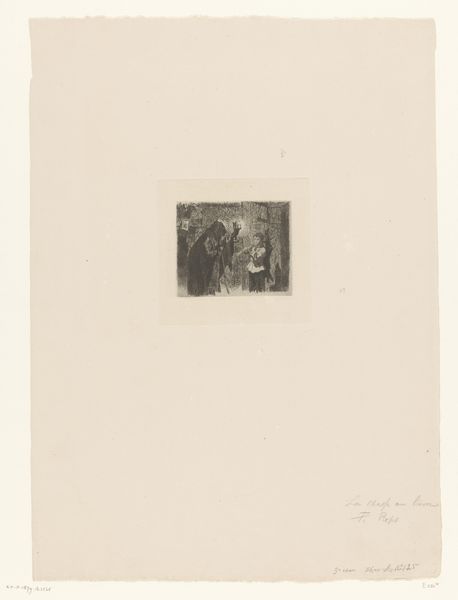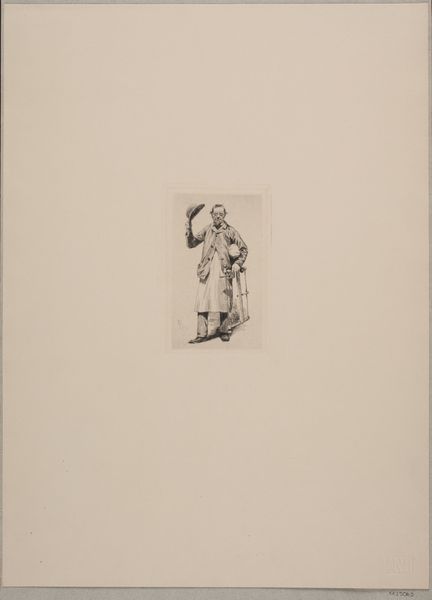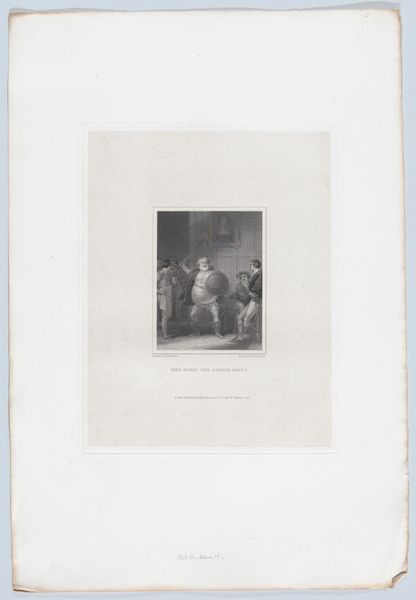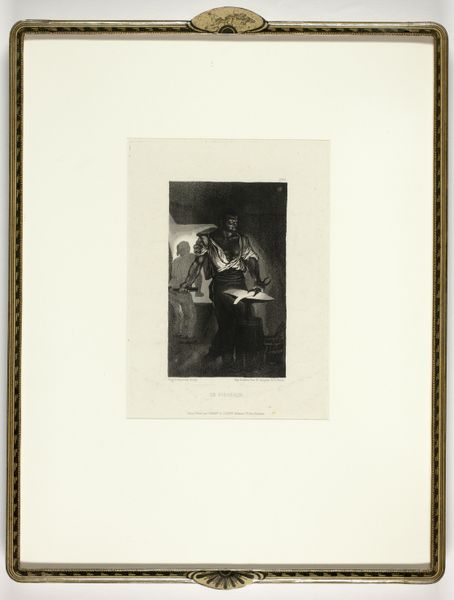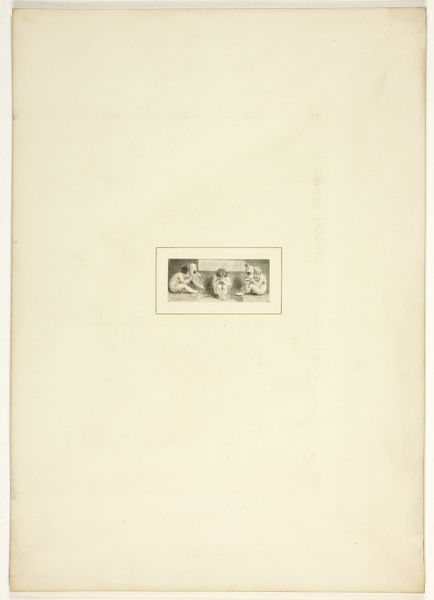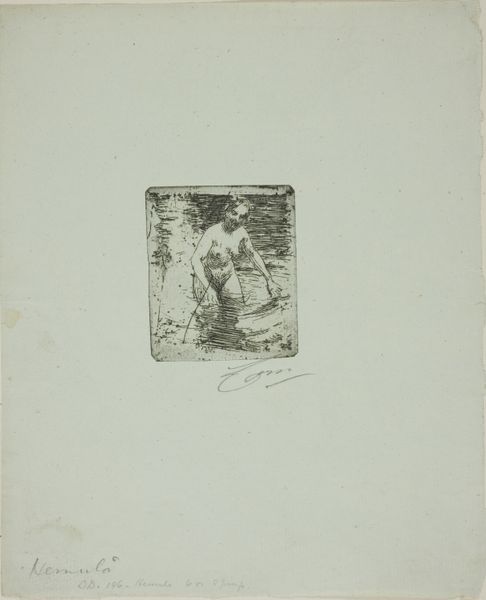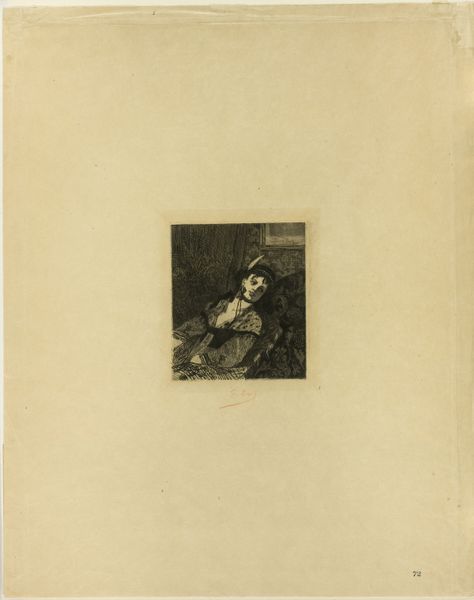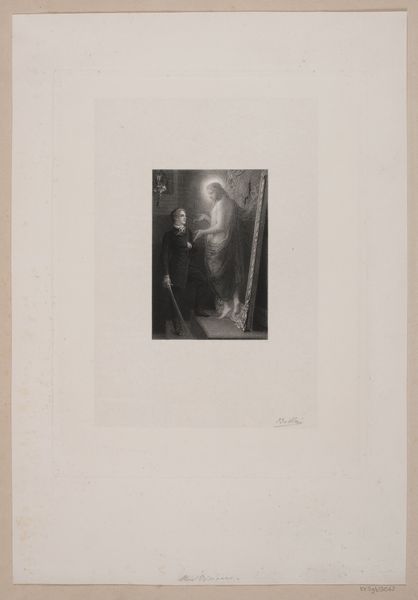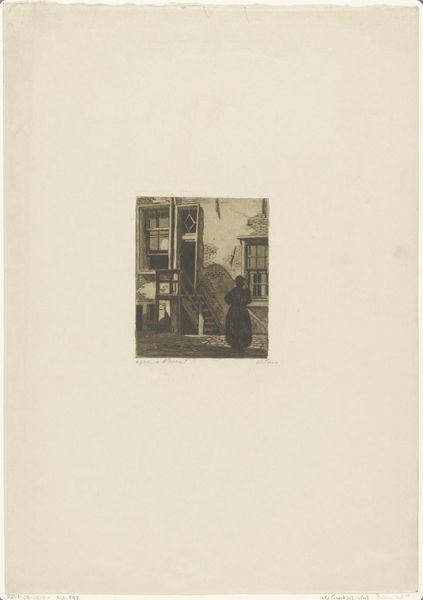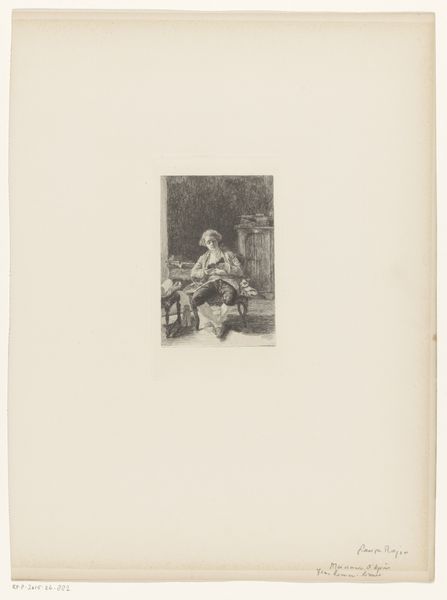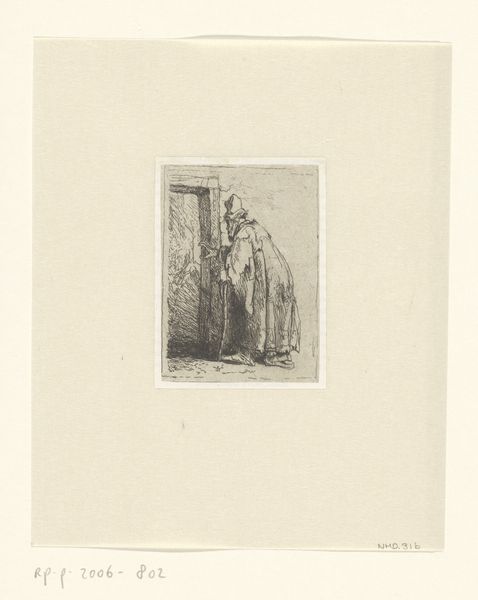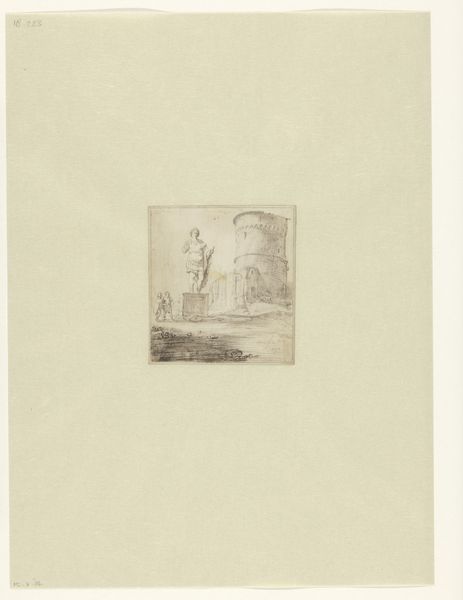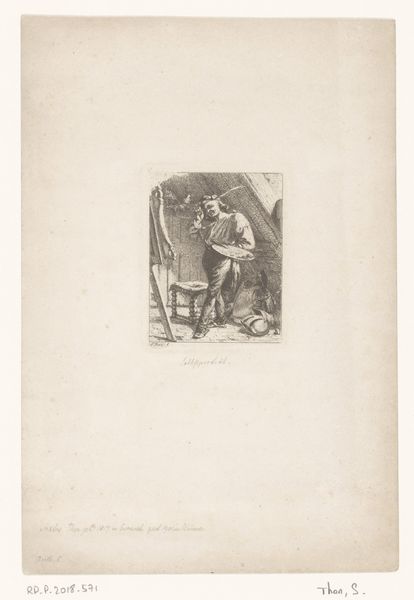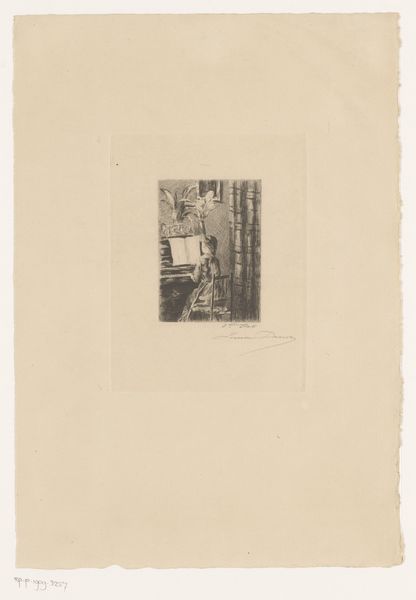
Dimensions: 95 × 54 mm (image/plate); 350 × 275 mm (sheet)
Copyright: Public Domain
Curator: I'm immediately drawn to the feeling this etching evokes—a quiet solitude, almost melancholy, despite the vibrant subject matter. Editor: Indeed. We’re looking at "Canal in Venice," created around 1892 by Gustave Leheutre. It's a captivating cityscape rendered with delicate lines on paper. The Art Institute of Chicago currently holds this particular print. Curator: You know, it makes me think about what it must've felt like to wander those waterways, almost unseen, as if Venice held secrets only revealed to the observant. There's an almost ghostly feeling to it. Editor: It’s interesting you say that. The impressionistic style definitely lends itself to that ethereal quality. Notice the use of light and shadow—how the artist uses them to create depth within a very narrow canal space. See the reflections on the water. It looks as though they serve almost to dematerialize the buildings' form. Curator: Absolutely! And it’s so small. Almost like a secret you can hold in your hand, yet vast with all the hidden layers within it. Do you see the solitary figure reflected? That adds such a layer to this for me. Editor: Formally, the composition emphasizes verticality, accentuating the confined nature of the canal. Leheutre is very much at play with perspective, creating the sensation of endless depth despite the piece’s actual physical dimensions. I think of it like a metaphor; constrained spaces can invite an exploration into what appears to be infinite. Curator: It reminds me that even in a place as romanticized as Venice, you can find these small, almost forgotten pockets of life that tell a totally different story than the postcards. I love art that brings an alternative narrative. Editor: Leheutre's etching presents a micro-analysis of urban existence. By examining the aesthetic organization and material processes, we come closer to uncovering deeper cultural values. This detailed method, of course, has become such an important part of how we interact with, how we study art, still to this day. Curator: So, a single figure, some lines etched on paper... I walked away from it thinking it’s funny that sometimes it only takes a little sliver of observation to change your entire view of things. Editor: And I think the piece illustrates how technique, composition and execution are all important avenues into those transformative revelations.
Comments
No comments
Be the first to comment and join the conversation on the ultimate creative platform.
